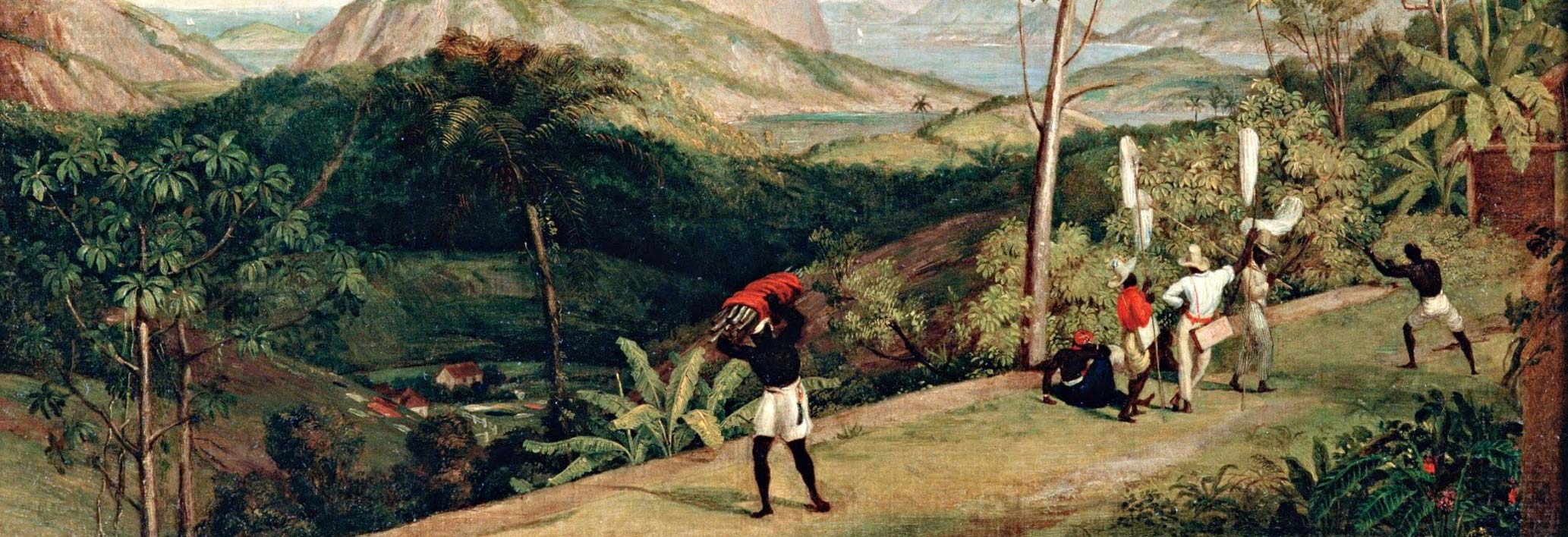Joanna was an eighteenth-century slave in the Dutch colony of Suriname and companion of John Gabriel Stedman, the European author of a widely read narrative.
Joanna was born on the Tenburg (later called Fauquembergue) sugar plantation on the Commewyne River, the daughter of the enslaved housemaid Seerie, and the white Dutch manager, Anthony Tielenius Kruythoff. Joanna was the second of the couple’s five children. Her mother tongue was Sranan, the Creole language spoken by the slaves, but her father also taught her to speak Dutch. Kruythoff also taught Joanna how to read and write. Seerie, however, refused to baptize all of her children and remained kept faith in Afro-Surinamese gods.
In 1768, Kruythoff tried to purchase Seerie and her children from the new plantation owner. He became ill soon after and drew up a will ordering his executor to arrange for emancipation for all of them. The purchase collapsed, however, and in 1769 Kruythoff returned to the Netherlands, leaving his family enslaved. He died soon after.
By early 1772, the plantation foundered under the punitive regime of the new manager and all of the Fauquembergue slaves (including Joanna and her family) were rented out to local families in Paramaribo, the capital. In April 1773, Seerie arranged a place for Joanna with Captain John Gabriel Stedman who had recently arrived from the Netherlands to fight a Maroon group. Joanna would keep house and serve as “wife” to Stedman in return for payment to her owner and a small fee to Seerie.
Stedman interspersed his military expeditions with living with Joanna and their son, Johnny, born in November 1774. Though he was not always faithful to her, he wrote fondly of her in his journal. They helped each other develop language skills and cared for each other when sick.
In August 1775, Stedman borrowed 1,800 guilders to purchase Joanna and Johnny’s freedom. Unable (or perhaps unwilling) to complete the purchase a year later, Stedman managed to obtain Johnny’s freedom but left mother and son with his creditor before he departed for the Dutch Republic in April 1777.
Joanna lived on in Paramaribo, serving Stedman’s creditor, Mrs. Godefroy. She died still enslaved in November 1782. In 1784, Johnny was sent to live with his father. Stedman’s journal reveals that Johnny grew up with much affection from his father, but that he drowned as a young sailor on an English frigate. Stedman’s thoughts circled around his Suriname years for the rest of his life, culminating in the 1796 publication of his Narrative of a Five Years’ Expedition against the Revolted Negroes of Surinam, illustrated by William Blake. The narrative included a sentimental tale of his intimacy with Joanna, noting her beauty and virtues. Later, abolitionists used the story of Joanna and episodes of violence to criticize Stedman’s defense of slavery and to support their cause.
Bibliography
Davis, Natalie Zemon. "Joanna." Dictionary of Caribbean and Afro-Latin American Biography , edited by Ed. Franklin W. Knight. , edited by and Henry Louis Gates Jr.. . Oxford African American Studies Center, http://www.oxfordaasc.com/article/opr/t456/e1085 (accessed Thu Sep 05 11:29:23 EDT 2019).
Prince, Mary. The History of Mary Prince, a West Indian Slave. Edited by Sara Salih. London: Penguin, 2000. First published 1831.
Stedman, John Gabriel. Dagbok öfwer Sina Fälttåg i Surinam. Translated by Samuel Ödmann. Stockholm: Johann Pfeiffer, 1800.
Stedman, John Gabriel. “Joanna – compiled [by Lydia Maria Child] from Stedman’s Surinam.” In The Oasis, edited by Lydia Maria Child, pp. 63–105. Boston: Benjamin Bacon, 1834. http:// www.archive.org/details/narrativejoanna00chilgoog.
Stedman, John Gabriel. The Journal of John Gabriel Stedman, 1744–1797. Edited by Stanbury Thompson. London: Mitre, 1962.
Stedman, John Gabriel. Narrative of a Five Years’ Expedition against the Revolted Negroes of Surinam: Transcribed for the First Time from the Original 1790 Manuscript. Edited by Richard Price and Sally Price. Baltimore: Johns Hopkins University Press, 1988.
Stedman, John Gabriel. Narrative of a Five Years Expedition against the Revolted Negroes of Surinam. 2 vols. London: J. Johnson, 1796. https://books.google.com/books/about/Narrative_of_a_five_years_expedition_aga.html?id=6r8WAAAAYAAJ&printsec=frontcover&source=kp_read_button#v=onepage&q&f=false
van Lier, Rudolf A. J. Frontier Society: A Social Analysis of the History of Surinam. Translated by M. J. L. van Yperen. The Hague: Martinus Nijhoff, 1971.
Author
Natalie Zemon Davis
Adapted by
James Almeida and Steven J. Niven
Contributing Institutions
Hutchins Center for African & African American Research, Harvard University, Cambridge, MA.
Oxford University Press (USA) African American Studies Center.





